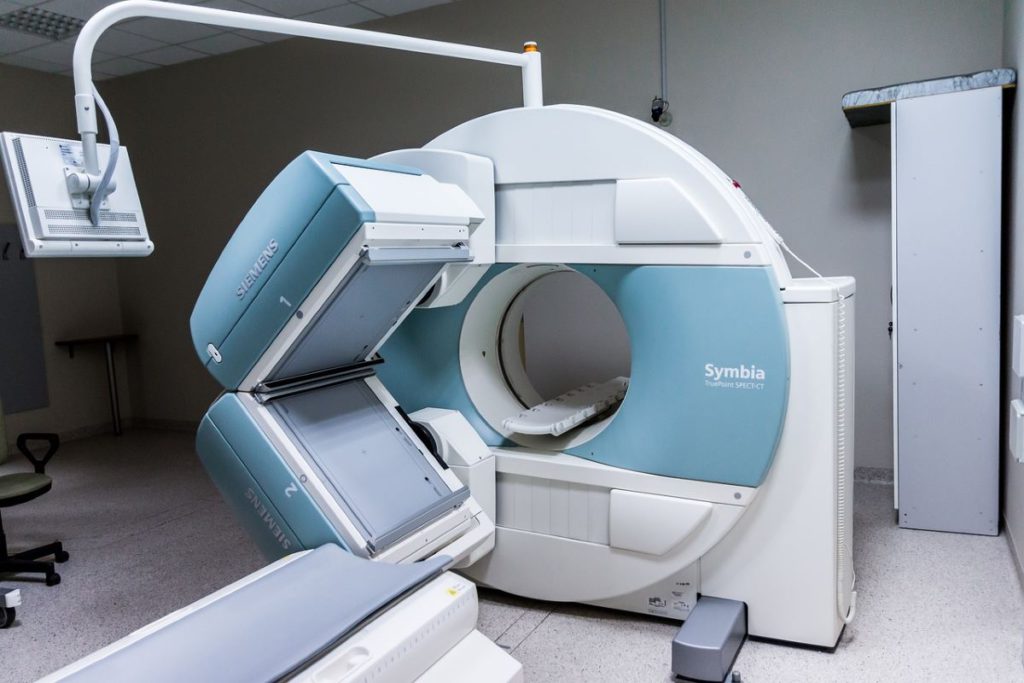Medical imaging has transformed the field of healthcare by providing non-invasive, highly detailed insights into the human body. It plays a critical role in diagnosing and treating a wide range of conditions, offering doctors the ability to see what’s happening inside a patient without the need for surgery. From identifying broken bones to detecting cancer early, medical imaging helps people in countless ways, improving both diagnosis and outcomes. One of the most advanced forms of imaging, the MRI scan is particularly effective in providing clear images of soft tissues, aiding in the diagnosis of various conditions.
Types of Medical Imaging
Medical imaging includes several techniques, each designed to capture different aspects of the body’s internal structures.
- X-rays – One of the oldest and most familiar forms of medical imaging, X-rays use radiation to create images of bones and certain tissues. They are commonly used to diagnose fractures, infections, or abnormalities in the lungs and heart.
- CT Scans (Computed Tomography) – CT scans use a combination of X-rays and computer technology to produce cross-sectional images of the body. These images allow for a more detailed look at bones, organs, and blood vessels. CT scans are particularly useful in detecting tumors, internal injuries, and diseases such as cancer.
- MRI (Magnetic Resonance Imaging) – MRI is widely regarded for its ability to provide detailed images of soft tissues, such as the brain, muscles, and internal organs. It uses magnetic fields and radio waves, making it a safer option compared to radiation-based imaging techniques. MRI is often used to diagnose neurological disorders, joint issues, and certain types of cancer.
- Ultrasound – Ultrasound imaging uses sound waves to create real-time images of the body. It is best known for monitoring pregnancy but is also used to examine organs, blood flow, and tissue abnormalities.
- PET Scans (Positron Emission Tomography) – PET scans involve the use of radioactive tracers to visualize how organs and tissues function. It is especially helpful in diagnosing cancer and assessing how well treatments are working.
How Medical Imaging Helps Patients
Medical imaging helps people in numerous ways by enabling early detection, accurate diagnosis, and effective treatment planning.
- Early Detection and Diagnosis
Early detection is often critical for conditions like cancer, heart disease, and neurological disorders. Medical imaging allows doctors to identify abnormalities at an early stage, often before symptoms appear. For instance, mammograms can detect breast cancer early, while CT scans and MRIs can identify brain tumors or cardiovascular issues before they become severe.
This early diagnosis can be life-saving, giving patients the opportunity to start treatment sooner and improving the likelihood of a successful outcome.
- Guiding Treatment Plans
Medical imaging is not limited to diagnosis; it also crucially informs and guides treatment. Once a condition has been identified, doctors can use imaging to monitor its progression and determine the most effective course of action. For example, in cancer treatment, PET scans are used to see how well a tumor is responding to chemotherapy or radiation therapy, allowing doctors to adjust treatment plans accordingly.
Similarly, MRI and CT scans are frequently used before surgeries to map out the exact location and extent of an issue, ensuring precision and reducing the risk of complications during the procedure.
- Minimally Invasive
Thanks to medical imaging, many conditions that once required exploratory surgery can now be diagnosed without any need for incisions. This non-invasive approach significantly reduces the risks associated with surgery, such as infections and long recovery times. Patients can often return home the same day, avoiding the stress and potential complications of more invasive procedures.
- Improving Patient Outcomes
Medical imaging enhances the ability of healthcare providers to make accurate and timely decisions. With clearer images and better information, doctors can tailor treatments to each patient’s unique situation, leading to more effective care. For example, precise imaging helps in targeting cancer treatments to the specific area, reducing damage to surrounding tissues and increasing the effectiveness of therapy.
- Monitoring Chronic Conditions
For patients living with chronic conditions like heart disease, diabetes, or arthritis, medical imaging plays a crucial role in ongoing monitoring. Regular imaging tests allow doctors to track the progress of a disease, adjust treatment as needed, and ensure that the condition is managed effectively over time. For instance, heart patients may undergo echocardiograms or CT scans to assess heart function and detect any potential complications.
The Future of Medical Imaging
Advancements in medical imaging continue to improve patient care, with emerging technologies such as 3D imaging, artificial intelligence, and even wearable imaging devices offering new possibilities. These innovations will enhance access, efficiency, and accuracy in imaging, leading to improved patient outcomes.
For example, 3D imaging is allowing doctors to see the body in more detail than ever before, offering new insights into complex conditions and guiding highly precise surgical procedures. AI, on the other hand, is helping to analyze imaging results faster and more accurately, aiding doctors in making quicker and more informed decisions.
Medical imaging is one of the most powerful tools in modern medicine, providing critical insights that help doctors diagnose, treat, and monitor various conditions. From the early detection of life-threatening diseases to the precise guidance of surgeries and treatments, medical imaging has revolutionized patient care. As technology continues to advance, the future promises even greater innovations, further improving healthcare outcomes and enhancing the quality of life for people around the world.
